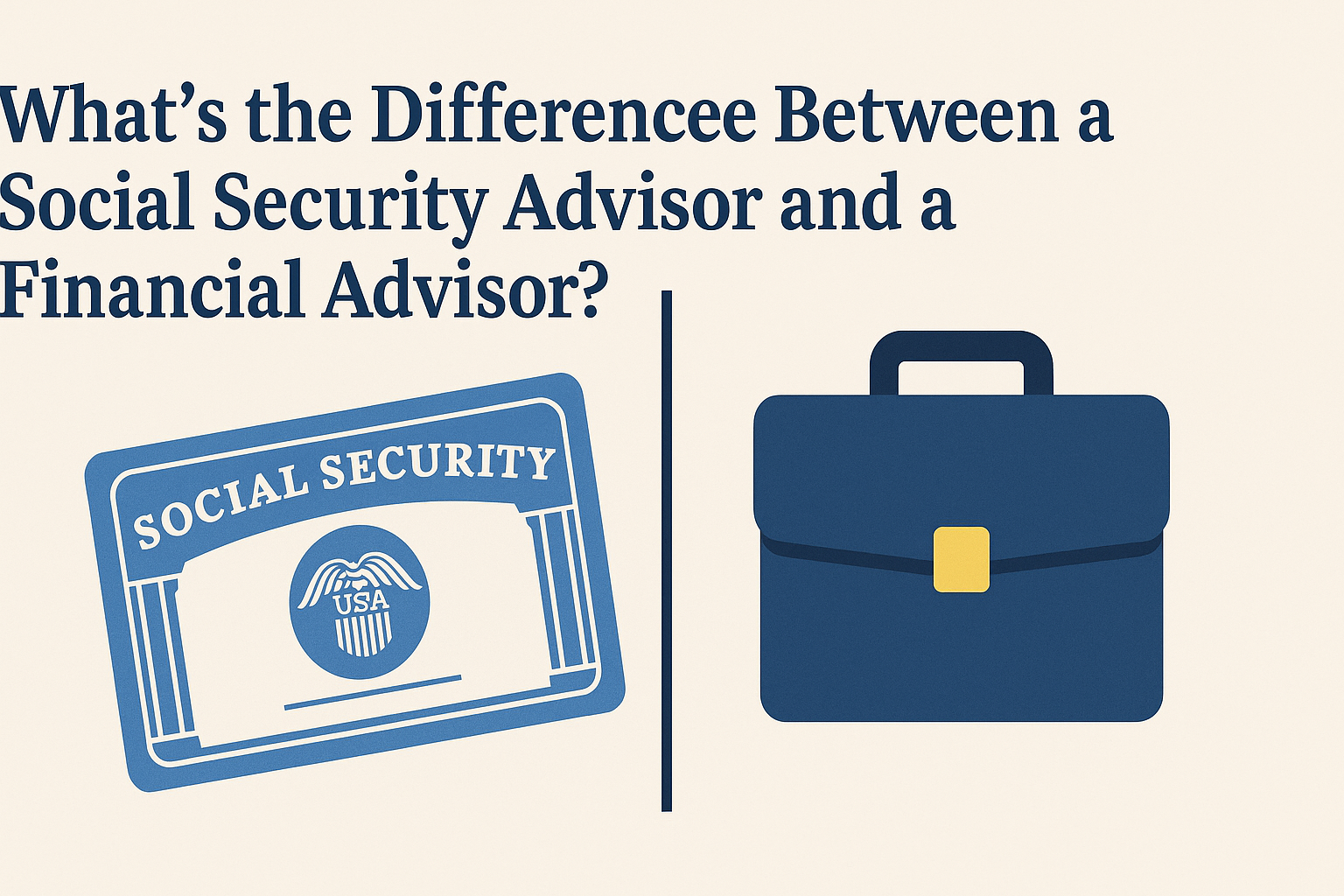Different titles, different tools
You wouldn’t go to a dentist for a heart checkup. In the same way, not every financial professional is equipped to give in-depth Social Security advice. Many people assume that financial advisors handle everything, but Social Security has its own rules, tools, and timing strategies that require a different kind of expertise.
If you’re preparing for retirement, it’s worth knowing what type of advisor to talk to and when. Let’s break down the difference between a Social Security advisor and a traditional financial advisor so you can make informed choices.
What is a Social Security advisor?
A Social Security advisor specializes in helping individuals and couples understand their claiming options. They use software tools to run different scenarios, optimize timing, and estimate how benefits will change based on age, income, marital status, and more.
Some professionals who do this work have certifications or training specific to Social Security, such as a Registered Social Security Analyst (RSSA). Others may simply have deep experience and a narrow focus on this area. Either way, their goal is to help you make the most of your benefits.
What is a financial advisor?
A financial advisor offers broader guidance across investments, retirement savings, insurance, taxes, estate planning, and more. They may help you build a long-term financial plan and adjust it as your life evolves. Some are fee-based, while others work on commission or charge based on assets under management.
While many financial advisors understand the basics of Social Security, it may not be their main area of focus. That’s why some teams bring in specialists when it’s time to get into the fine print.
Key differences at a glance
Scope of expertise:
A Social Security advisor focuses on one thing — optimizing your benefits. A financial advisor looks at the full financial picture, which may include but not center around Social Security.
Tools used:
Social Security advisors often use advanced calculators, income replacement modeling, and breakeven analysis to show claiming strategies. Financial advisors typically use comprehensive planning tools that weigh Social Security as part of a larger retirement income plan.
When to work with each one:
You might work with a Social Security advisor when you are within 5 to 10 years of retirement and want to understand the best claiming strategy for your household. You might work with a financial advisor earlier in your career, or later on to manage a full retirement income strategy.
Do I need both?
In some cases, yes. Many people benefit from the combination. If your financial advisor does not specialize in Social Security or does not offer benefit timing analysis, it might be smart to supplement with a Social Security-focused session. Likewise, a Social Security advisor typically won’t manage your investments or help with tax diversification across retirement accounts.
Think of it like this: your financial advisor draws the map. Your Social Security advisor helps you get the timing of the first turn exactly right.
Questions to ask your advisor
Not sure what your current advisor covers? Here are a few questions you can ask:
-
Do you provide detailed guidance on Social Security claiming strategies?
-
Do you use any software or analysis to model Social Security scenarios?
-
Are you familiar with spousal, survivor, or divorce-related benefit options?
-
Can you coordinate my Social Security strategy with my other income sources?
If the answer is no, it might be time to loop in someone who can fill that gap.
Final thought
You worked hard to earn your Social Security benefits. Deciding how and when to claim them is too important to leave to chance. A financial advisor may help you build a strong foundation, but a Social Security advisor can help you make sure the roof doesn’t leak.
If you have feedback, questions, or ideas for future articles or Information Hubs, please contact us. Your insights help us create valuable content.


